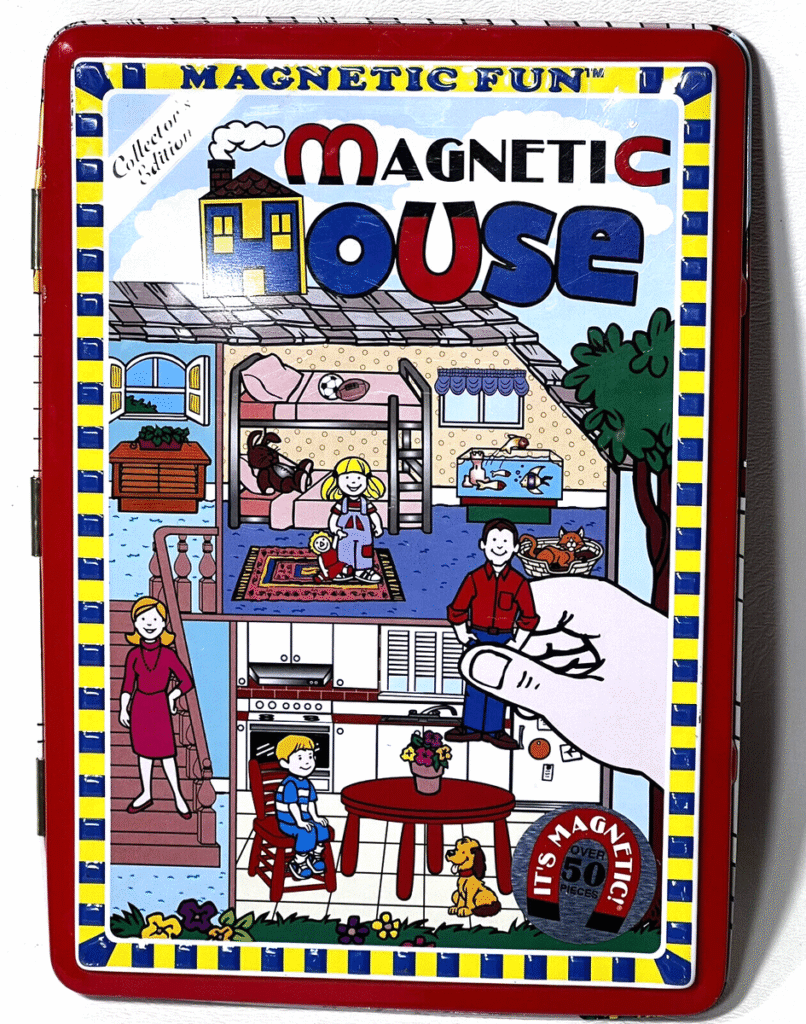
Our homes are filled with fascinating objects, but some possess a hidden power that often goes unnoticed. Magnetism, an invisible force that attracts or repels certain materials, plays a surprisingly significant role in our daily lives. From the simple act of sticking a note to the fridge to the complex workings of electronic devices, magnetism is all around us. This article delves into the world of magnetic objects in the house, uncovering the diverse range of these hidden treasures and exploring their impact on our everyday experiences.
We’ll begin by examining common magnetic objects at home, highlighting their unique properties and applications. Then, we’ll delve deeper into the science behind magnetism, explaining how it works and its various forms. Finally, we’ll explore the numerous ways magnetism is integrated into our daily lives, from simple conveniences to cutting-edge technologies.
Magnetic Objects in the Home
Stepping into any typical home reveals a surprising number of magnetic things at home. These objects, often overlooked in their mundane functionality, demonstrate the pervasive influence of magnetism in our lives.
One of the most ubiquitous examples is the humble refrigerator magnet. These colorful and decorative pieces not only hold grocery lists and important reminders but also serve as miniature works of art adorning our kitchen walls. Beyond the fridge, magnetic objects can be found in various forms throughout the house. From key holders and bulletin boards to compass needles and even certain types of toys, magnetism adds a touch of practicality and intrigue to everyday items.
Refrigerator Magnets
The refrigerator magnet holds a special place in the realm of magnetic objects in the house. These small but mighty magnets have become an integral part of our kitchens, serving as both functional tools and decorative accents.
Their ability to cling effortlessly to metal surfaces makes them ideal for holding notes, photos, artwork, and even grocery lists. Refrigerator magnets come in a vast array of designs, from whimsical characters and playful animals to inspirational quotes and vibrant landscapes. They allow us to personalize our kitchens, adding a touch of personality and creativity to this often-functional space.
The Evolution of the Refrigerator Magnet
The humble refrigerator magnet has undergone a fascinating evolution since its inception. Early versions were simple discs made of ferrite, a magnetic material known for its affordability and strength. Over time, advancements in technology led to the development of more sophisticated magnets with enhanced properties. Today, we see a wide range of materials used in refrigerator magnets, including neodymium, samarium cobalt, and even flexible rubber magnets.
Household Items with Magnetism
Beyond the fridge, magnetism quietly influences numerous other magnetic objects at home. Many everyday items incorporate magnetic components, often without us realizing their presence.
Magnetic Door Stops
Magnetic door stops are a common sight in homes, providing a convenient and stylish way to prevent doors from slamming shut. These small devices utilize magnets to hold the door securely in place, eliminating the need for bulky stoppers or wedges. They come in various designs, seamlessly blending with different home decor styles.
Magnetic Wristbands
For DIY enthusiasts and craftspeople, magnetic wristbands offer a handy solution for holding screws, nails, and other small metal objects while working. These bands feature embedded magnets that securely grip the tools, freeing up hands for more complex tasks. They are particularly useful in woodworking, construction, and jewelry making.
The Science of Magnetism
Magnetism is a fundamental force of nature, arising from the movement of electric charges. At its core, magnetism stems from the intrinsic property of certain materials called “magnetic moments.” These moments, caused by the spinning electrons within atoms, create tiny magnetic fields. When these individual fields align in the same direction, they combine to form a larger magnetic field, giving the material overall magnetic properties.
Types of Magnetism
There are several types of magnetism, each with unique characteristics:
- Ferromagnetism: This is the strongest type of magnetism, exhibited by materials like iron, nickel, and cobalt. These materials can be permanently magnetized, retaining their magnetic properties even after the external magnetic field is removed.
Paramagnetism: Paramagnetic materials are weakly attracted to magnets but lose their magnetism when the external field is removed. Examples include aluminum, platinum, and oxygen.
Diamagnetism: Diamagnetic materials are weakly repelled by magnets. This type of magnetism is present in most materials but is often overshadowed by stronger magnetic effects.
Everyday Applications of Magnetism
The influence of magnetism extends far beyond our homes, permeating countless aspects of modern life. From simple conveniences to complex technologies, magnetism plays a crucial role in shaping our world.
Data Storage
Hard drives and other storage devices rely on magnetism to store vast amounts of data. Tiny magnetic particles are arranged on a spinning disk, representing binary code (0s and 1s). Reading and writing data involves manipulating the orientation of these magnetic particles.
Medical Imaging
Magnetic Resonance Imaging (MRI) utilizes powerful magnets to create detailed images of internal organs and tissues. The strong magnetic field aligns the hydrogen atoms in the body, and radio waves are used to perturb this alignment. The resulting signals provide valuable information for diagnosing and monitoring various medical conditions.
Transportation
Electric motors, which power many vehicles, rely on the interaction between magnetic fields and electric currents. This principle is also applied in generators, which convert mechanical energy into electrical energy using magnetism.
Conclusion
The world of magnetic objects at home reveals a fascinating interplay between science and everyday life. From the simple act of sticking a note to the fridge to the complex workings of electronic devices, magnetism quietly shapes our experiences. By understanding the principles behind this invisible force, we can appreciate its profound impact on our world and marvel at the ingenuity that harnesses its power for countless applications.
